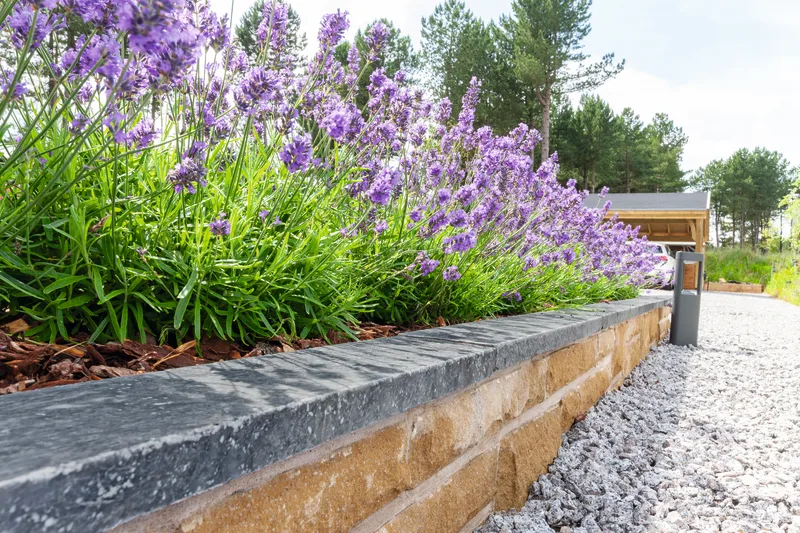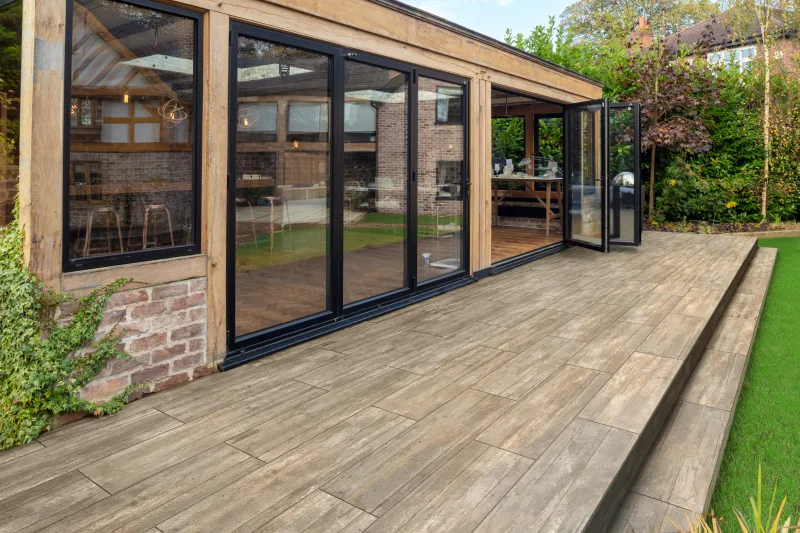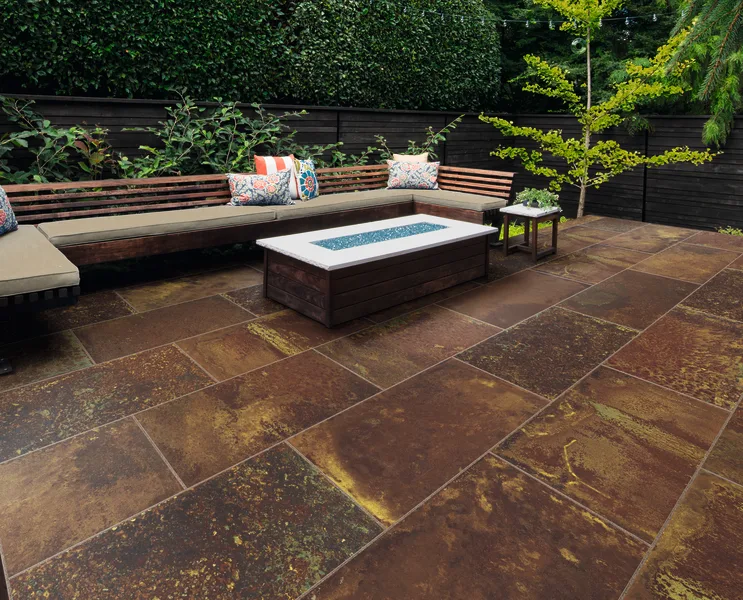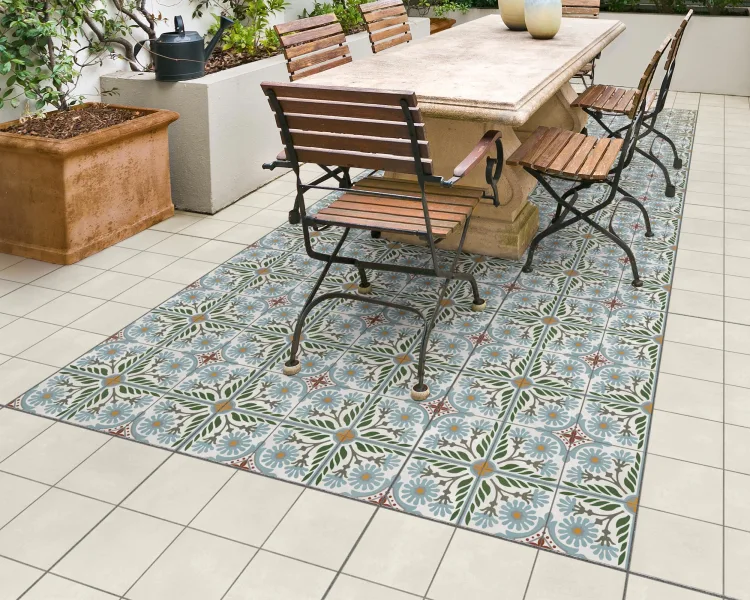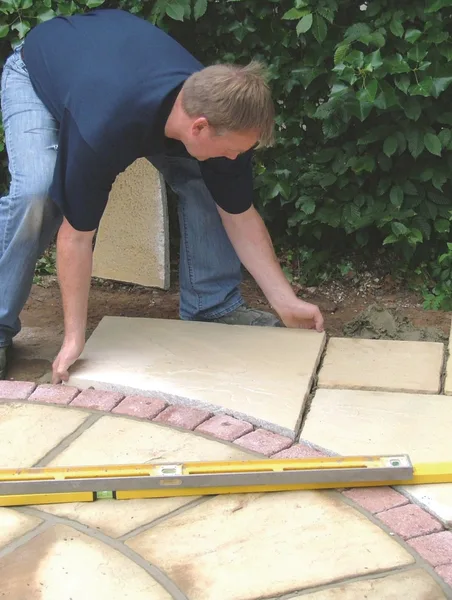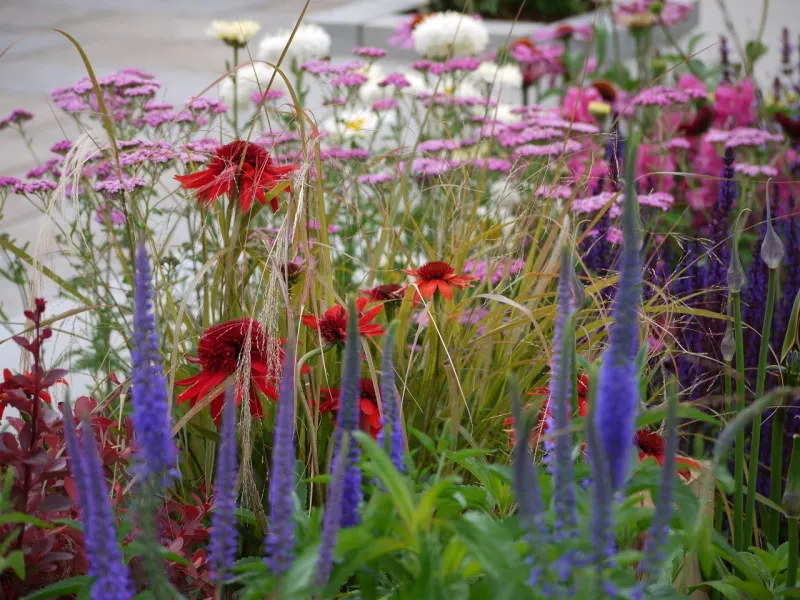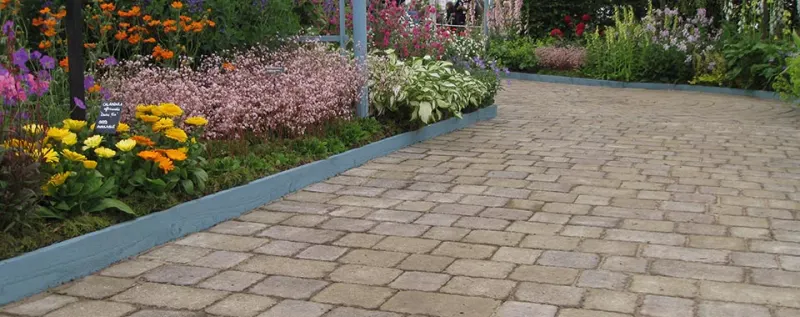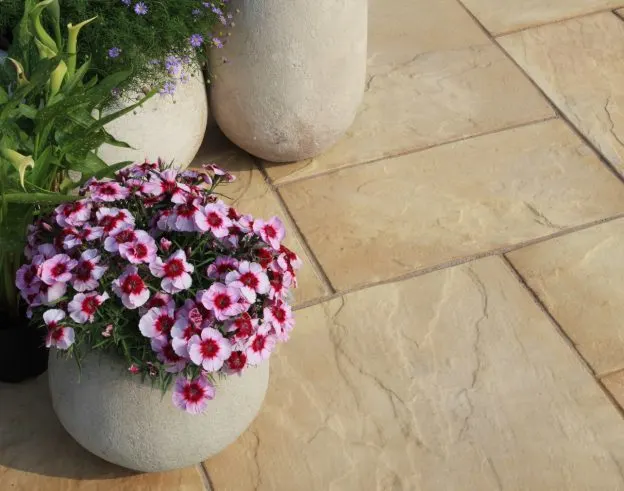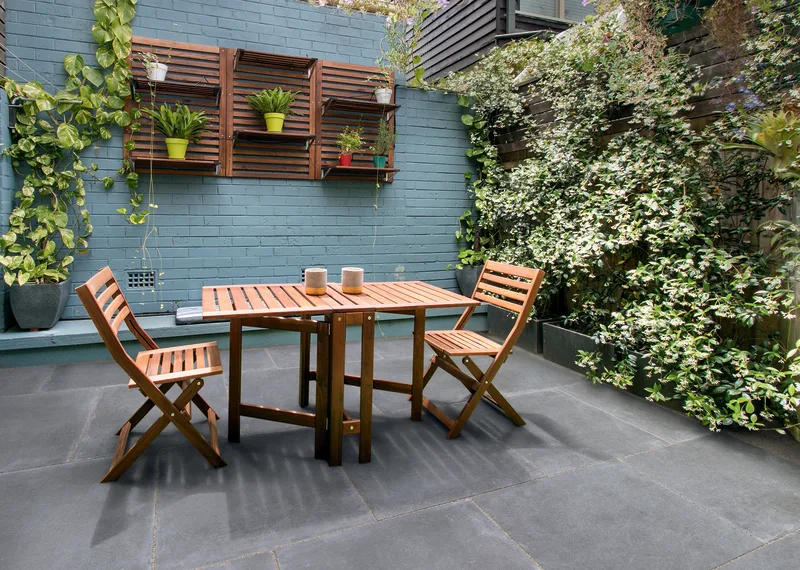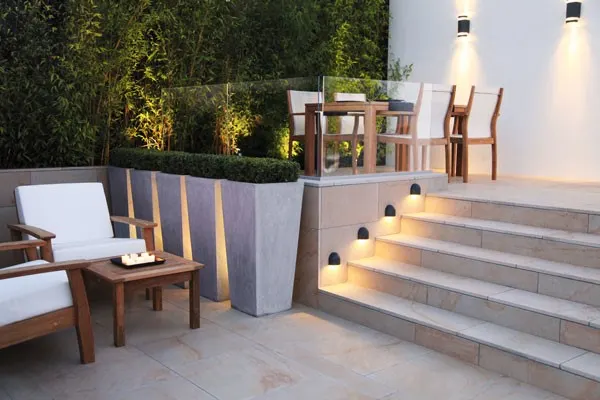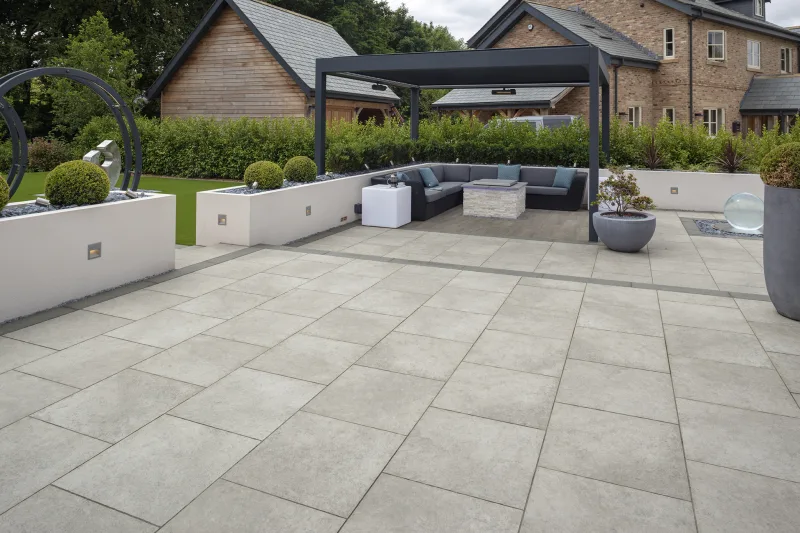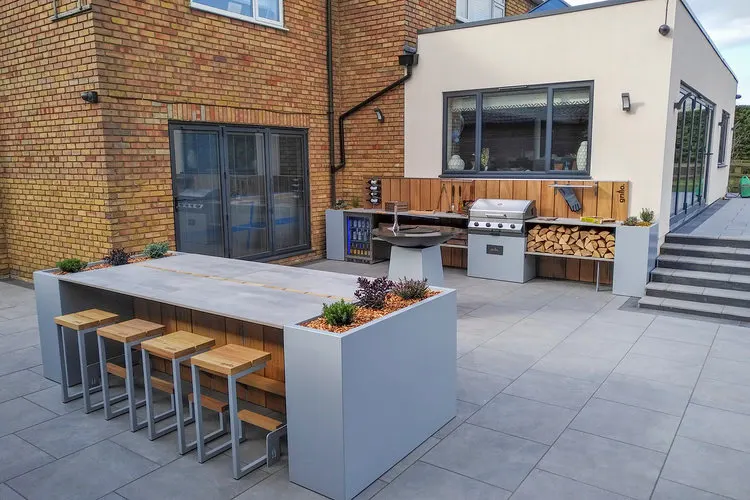Gardens can bring peace, purpose, and pleasure into our lives. Whether you're entertaining friends on the patio, growing fruit and vegetables, or just getting away from the world, our gardens should be a private sanctuary.
It's important, then, that you design your outdoor space to be an extension of you and somewhere you want to spend your time. Building your dream space is no easy feat, and working with a garden designer isn't cheap.
To help you create the outdoor space of your dreams, we've put this list of garden ideas together. Here, we explore front and back garden ideas to help you build your own corner of heaven, no matter what that is.
Things to consider before you transform your garden
Going into a project like this, you can either have an understated or grand garden design in mind, but before you start renovating, revamping, and reinvigorating your space, there are a few things you need to keep in mind. These include...
The function of your garden
Before you start changing your garden, you must understand its purpose. Will you be relaxing, entertaining, or growing vegetables in it, or is it somewhere for your kids to play?
Whatever your garden plans are, you must know what you want before work starts. Otherwise, you can spend a small fortune on something that doesn't reflect your current and future needs of you those you live with.
The space and layout
Once you know what you want your garden to do, you have to make sure your plans are suitable for your space. If the layout doesn’t meet your needs, it's time to go back to the drawing board and reassess.
Your budget
Garden renovations can be expensive, so you need to set a budget to avoid overspending. Once you know how your garden should function, research what you want and put some money aside to make your dream garden a reality.
Maintenance
Once all of the garden work has been completed, you'll need to maintain it to ensure it stays in good condition and that things like furniture can be used for years.
Maintenance can be expensive, depending on the types of equipment or furniture you buy, so you should budget for this as well as the initial spend.
Get to know the local climate and microclimate
If you want to create a space that's alive with vibrant coloured plants, try your hand at organic gardening, or go for something low-maintenance, you need to know the local climate.
The local climate may differ if you live closer to hills, lakes or cities. The microclimate is specific to your garden and includes things like the soil type and the sunlight your outdoor space gets.
All these factors will affect how things grow, and you should choose plants that will thrive in the conditions you have.
16 garden and landscaping ideas to transform your outdoor space
1 - Change your lawn's shape
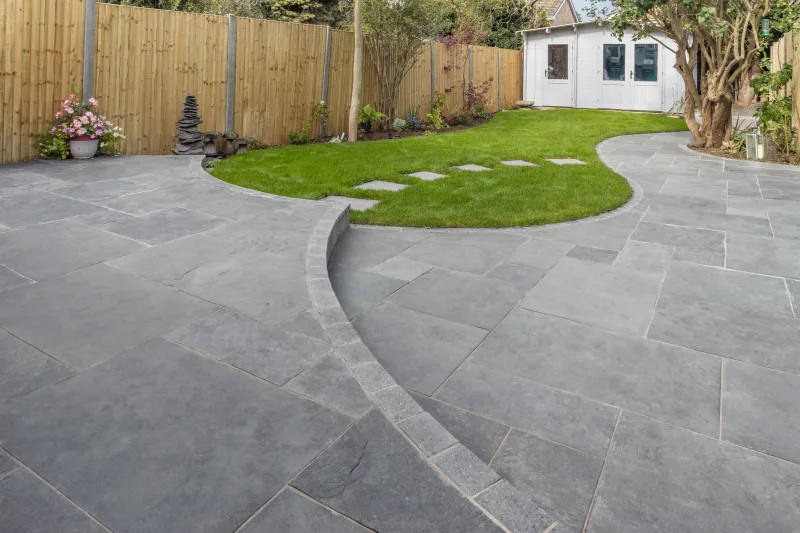
Reshaping your lawn's appearance into a more defined shape or pattern can transform your space, especially when you add decorative elements and plants to the newly created borders.
Stone setts and cobbles add visual interest and separate the space. Consider plants and other garden items, like smaller trees and bird feeders, that bring the space to life.
2 - Create height and dimension with plants
Adding height to your outdoor space can create aesthetic appeal. Adding arches and pergolas, building planter beds, or using oversized, decorative pot plants can quickly transform your two-dimensional garden design into a three-dimensional wonderland.
Pergolas with hanging fruit or cascading flowers add depth and style to your space. Consider using climbing plants, which you might train up a structure to give height and depth to your room and add aesthetic appeal.
3 - Create an indoor-outdoor flow
Create a flow between your interiors and the outdoors as part of your garden design. Choose a good flooring material to ensure that the interior transitions smoothly, and consider adopting the same colour scheme or different shades of the same colour.
Establishing new and distinct internal boundaries to encourage movement around the area can create separate spaces in the garden. These boundaries could be established using decorative panels, planted borders and climbing plants, or significant structures such as walling, trellis, or a larger multi-stem tree.
To create a "transparent" barrier, you may use more delicate plants like Agapanthus, Verbena, or various beautiful grasses. Changing your route through a garden is a terrific way to keep it interesting all year and inspire you to spend more time there.
4 - Add plenty of garden seating
Making space to sit in the garden is an integral part of the design, so you need to consider seating areas that encourage guests to relax and socialise.
When designing small gardens, it is essential to consider how to use boundaries to hide unpleasant views, frame desirable ones and give character to your small garden space. For an outdoor dining area with minimal space, try space-saving privacy screens or trellises to make the most of your environment.
To create a sitting area with well-defined borders, use an existing building like your house or garage. Plants, a paved garden path, and structural features like fences, pergolas, trellises, and screens can also establish borders.
5 - Establish a focal point in your garden
As with interiors, a single focal point in a garden can be a great way to make a statement and focus attention. Remember that focal points can be adjusted to fit any size garden. An eye-catching, one-of-a-kind plant can liven up even the tiniest of spaces.
Consider a sculpture, water feature, or outdoor 'rug' created with porcelain paving if you have a medium or large garden. Intricate patio designs can also make a big statement.
6 - Choose the right landscaping materials
Hard landscaping, such as flags, garden pavers, and steps, needs to be made from durable, long-lasting materials. Otherwise, maintaining them can be expensive.
To help keep costs down, you should use a mix of hard and soft landscaping. This will help create different looks and separate areas of your garden.
By combining large and small pieces of the same paving or stone product or selecting different colours, you can add interest, texture, and depth to patio spaces, making them a focal point of your garden.
7 - Soften hardscaping features with plenty of plants
You will need hard landscaping for both the structure of your garden and the practical components you use daily. Try to avoid creating a concrete jungle. Pair flowers and plants with round or flat garden edging stones to soften hardscaped features.
With trellised garden ideas, you can grow sweet, flowery honeysuckle or colourful clematis over the walls. Ornamental grasses soften the hardscaping features and are easy to maintain.
8 - Consider low-maintenance plants
If you don't like gardening or just don't have the time, you need a low-maintenance garden. To do this, reduce the number of plants in your garden and choose those that don't require too much attention, like geraniums, peonies or hydrangeas.
A good rule of thumb is to limit yourself to five or ten different species. Over time, you'll learn how to care for your plants and identify and eliminate weeds properly.
9 - For effect, repeat planting and colours
Don't buy plants because you like them at the garden centre. Do some research, list the
plants you want, and narrow it down to more manageable ones.
Wildflowers can provide an eye-catching display and benefit wildlife. Choose hardy, long-lasting plants that are beautiful and long-lived.
Use coloured markers and sketch out your ideas. There's nothing better than creating an arrangement with a limited colour palette. This shows that each plant's location has been thoughtfully considered. Specific repetitions may connect the garden.
10 - Start small with container gardening
Raised beds can be spacious and are a must when cultivating food or vegetables. If you have a small space, consider growing herbs, edibles, and flowers in containers.
Planters will work for virtually any garden because they can be placed wherever space is available. This is ideal for renters wanting to take plants with them or for moving around the space in different seasons.
11 - Install living walls
Living wall designs are ideal for embracing horizontal plants while producing maximum drama in outdoor living areas.
In small gardens or balconies, you could stagger plants up the fence and wall to optimise the space. Likewise, hanging baskets are a good choice for your front garden.
Not blessed with a big garden? Don't worry. Explore 15 budget ideas for small gardens for inspiration.
12 - Use outdoor lighting
Even a tiny garden can benefit from well-placed lighting, which is particularly important during the winter months when the days are shorter and there is less colour and greenery.
Consider outdoor lighting from the very beginning of the garden design process.
The options are almost limitless when it comes to lighting. Hanging fairy lights can double as Christmas lights during the festive season, adding a gorgeous, magical vibe to your garden.
Fencing spotlights and deck step lights can be used to light the perimeter of your garden or any stairs, while path lights continue to be the most effective method for lighting the front garden and driveway.
13 - Upgrade the fences in your garden
Garden fencing serves a variety of functions. From protecting your garden to acting as a place to hang lighting and baskets, a new fence can add visual appeal to your property.
If you're keen on living walls, climbing vines thrive in lattice-style fences and increase your garden's privacy as the vines weave through the gaps.
Likewise, a garden arbour is ideal for drawing attention to a specific entrance point and is a beautiful addition to any yard.
14 - Create a garden room
Garden rooms and cooking areas are a great way to make the most of unused space and don't usually need planning permission. You could even consider using your shed or summerhouse to host parties and accommodate overnight visitors.
Outdoor kitchen areas are perfect for summer BBQs and entertaining and make excellent use of dead space in larger gardens. If you're a budding hostess with the mostess, ensure your kitchen area is covered to prevent the British weather from hampering outdoor shindigs.
15 - It's all about the furniture!
There's nothing like relaxing in your backyard, whether it's a sprawling lawn or a cosy little patio. Everything is possible with fantastic garden furniture.
Garden furniture stored beneath a table when not in use is ideal for smaller outdoor areas, such as courtyards and patios. If you have a big garden, consider L-shaped couches, which provide plenty of space for guests.
Spend your money wisely and choose the best outdoor furniture you can afford. Depending on available space, make it as simple as possible to sit and stand up without encountering obstacles.
16 - Maximise the light!
A shady backyard can affect your garden design ideas, especially if they revolve around flower beds or having somewhere to grow herbs and produce.
Several things can be done to increase the light levels in your garden. First, you should see if you can cut any trees or hedges that might be blocking the sun.
If you've done this and feel like your space still needs some vitamin D, you should consider painting garden walls and fences white to better reflect the light it does get.
When it comes to hard landscaping, try to pick lighter options that will help maximise the light. Choose warmer hues, like beige flags, and avoid dark colours and materials, like slate.
Other reflectors of the sun that can be strategically placed around your outdoor space include mirrors and water features.
Transform your outdoor space with Marshalls
Plants and creative landscaping can help you maximise your outside area throughout the year. All year long, your garden will be a beautiful place to spend time with your family, thanks to the most extraordinary gardening designs you can come up with.
Whether you're working with a little patch of grass, a large courtyard or a sprawling lawn, we have plenty of ideas to help you make the most of your outdoor space.
Explore our other guides to get your creative juices flowing, including ideas for low-maintenance front gardens, 12 ideas for sloped gardens and tips on improving your home's kerb appeal.
If you're ready to start transforming your garden, Marshalls covers all your hard landscaping needs. Explore our leading range of outdoor tiles, garden walling, and pathway solutions and start building the garden of your dreams.
Still planning your outdoor space? We understand these things take time.
Visit our completed projects for more inspiration and photos of gardens. Don't forget, you can use our outdoor reality app to see our paving products in your outdoor space instantly.










